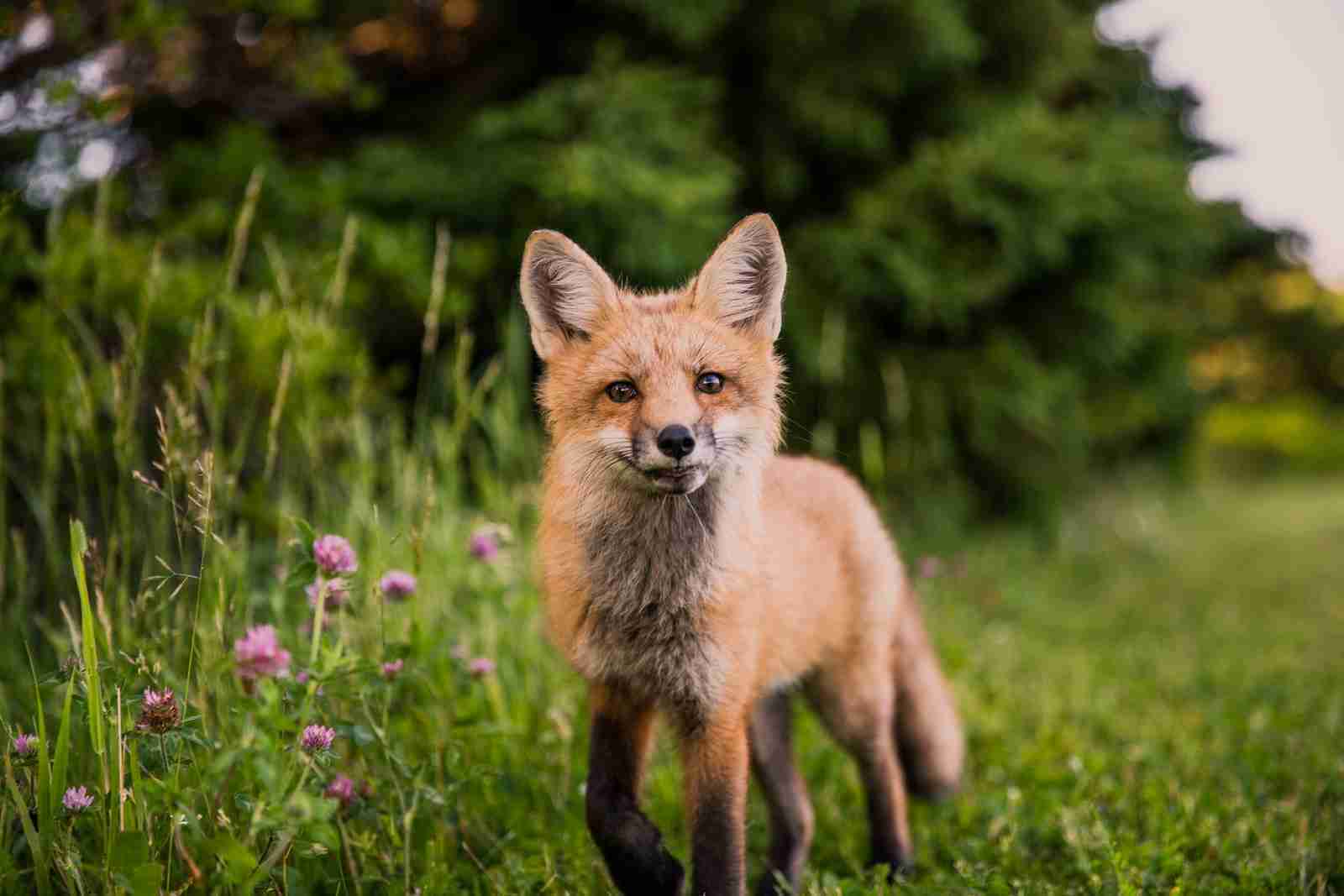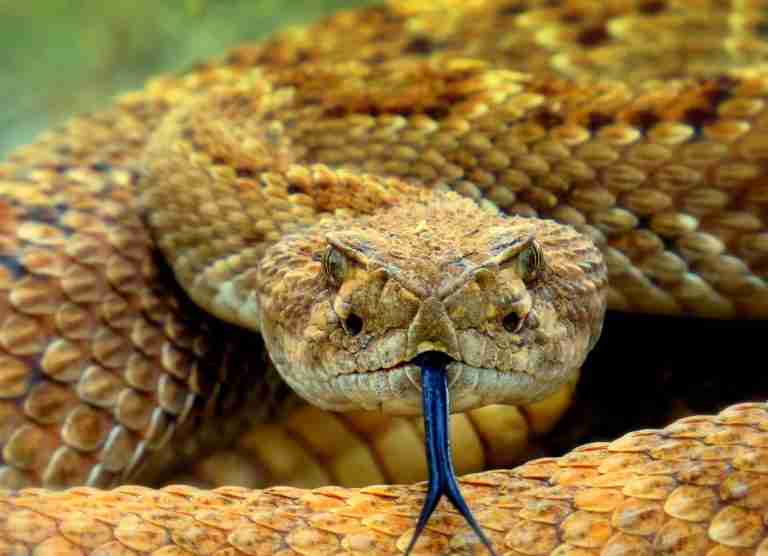26 Fun Facts About Foxes | Surprises in Every Bushy Tail
1. Foxes are omnivorous mammals with pointy ears and bushy tails.
Foxes, with their sharp pointy ears and fluffy tails, are quite versatile eaters. They can munch on plants and hunt small animals, making them omnivores.
Have you ever seen one rummaging in your backyard? They might be searching for fruits, insects, or even small rodents.
2. A fox’s whiskers are on its legs and face.
Imagine having feelers on your legs and face. Foxes have whiskers not just on their snouts, but also on their legs. These special hairs help them sense changes in their surroundings.
So, if something is near, even in the dark, their whiskers give them a heads-up.
3. Foxes have vertically oriented pupils, like cats.
You might notice something cat-like when looking into a fox’s eyes. They have vertically oriented pupils, much like our feline friends.
This unique feature helps them see better in dim light, giving them an edge during dawn and dusk hunts.
4. Foxes are one of the few canids that can climb trees.

If you think only cats can gracefully maneuver up trees, think again. Foxes are among the rare canids with this impressive skill.
Spotting a fox up in a tree is not common, but when they’re after prey or seeking safety, they can certainly pull off some tree-climbing moves.
5. Foxes have partially retractable claws.
Foxes have a unique feature in the world of canids their claws are partially retractable. This means they can extend or retract them a bit, similar to how a cat does.
This feature aids them in activities like climbing and grasping their prey.
6. Foxes communicate using more than 28 different sounds.
Chatting in the Fox world is a lively affair. They use over 28 different sounds to communicate. From gentle whimpers to loud barks, foxes have a rich vocal repertoire.
Each sound carries a message, be it calling for a mate or warning others of danger.
7. Foxes stash food in multiple hiding spots for later.
Foxes are clever planners. When they have extra food, they don’t waste it. Instead, they hide it in various spots for a rainy day.
This behavior, called caching, ensures they have snacks available when food is scarce.
8. Foxes use Earth’s magnetic field to hunt.

Nature has gifted foxes with an amazing hunting tool the ability to sense Earth’s magnetic field.
When they leap to catch prey under the snow or ground, they align their attack with this magnetic field. It’s like having a built-in compass to pinpoint their dinner.
9. Foxes have a sharp sense of hearing, they can hear a watch ticking 40 yards away.
Ever wonder how foxes seem to know where their prey is, even when hidden? Their sense of hearing is exceptional.
Believe it or not, a fox can hear a watch ticking from 40 yards away, It’s like they have built-in super headphones.
10. Fox has 42 teeth, with sharp canines for gripping prey.
A fox’s mouth is a marvel with 42 teeth, each having its role. The standout ones are their sharp canines.
These pointed teeth are crucial for gripping and holding onto their prey, ensuring their meal doesn’t slip away.
11. Foxes will eat almost anything, including fruits and vegetables.
One of the fun facts about foxes is their diverse diet. They aren’t picky eaters at all.
From juicy berries to crunchy insects, foxes have an appetite for a variety of foods, even including fruits and vegetables.
12. Foxes are more related to dogs than to cats.
While foxes might remind us of cats in their behavior and certain features, fun facts about foxes reveal that they’re more closely related to dogs.
But those sly movements and curious attitudes? Yep, that’s their inner cat shining through.
13. Foxes are crepuscular, most active during dawn and dusk, which is one of the fun facts about Foxes.
While many animals choose to be active during the day or night, foxes prefer the times in between.
They are crepuscular, meaning they’re most lively and on the move during dawn and dusk. It’s an advantage that helps them find food and stay safe.
14. Foxes can sprint at speeds up to 45 mph.
Fun facts about foxes don’t just stop at their diet or habits. These creatures are speedy runners. When in a hurry or chasing prey, foxes can sprint at astonishing speeds of up to 45 mph.
That’s faster than most city speed limits.
15. Foxes have been known to steal golf balls, mistaking them for eggs.
Golfers sometimes face a peculiar challenge on the course, and it’s not just the game itself. Foxes, in their playful curiosity, have been known to swipe golf balls, mistaking them for eggs.
So if your golf ball goes missing next time, look around a fox might be the cheeky thief.
16. Foxes have excellent night vision.

When the world gets dark, foxes are just getting started. Their eyes are adapted for low light, providing them with excellent night vision.
This ability ensures they can navigate and hunt efficiently even in the moonlight. It’s nature’s way of giving them a pair of night-vision glasses.
17. In winter, a fox sleep curled up with its fluffy tail over its face.
Winter brings cute behavior out of foxes. To stay warm, they sleep curled up, using their fluffy tails to cover their faces.
This not only keeps their noses warm but also creates a cozy blanket from the chilly air.
18. A male fox is called a dog, while a female is called a vixen.
In the world of foxes, naming is quite interesting. A male fox is referred to as a dog, and a female is known as a vixen.
And speaking of vixens, when they’re expecting, they don’t have to wait long. A vixen’s pregnancy lasts just 53 days, a relatively short time in the animal kingdom.
19. Foxes can swim, although they may not be fond of it.
Fun facts about foxes often surprise people, like their ability to swim. While they’re capable of taking a dip, it’s not necessarily their favorite activity.
If they need to cross water or escape a threat, they’ll swim, but they generally prefer dry land.
20. Foxes dig underground dens mostly for raising kits, not for shelter.

Think foxes dig underground dens for shelter? Nope, These dens, also known as earth, are primarily created for raising their young ones, called kits.
It’s all about providing a safe and nurturing space for their family, rather than hiding from the elements.
21. Foxes have a lifespan of 3-4 years in the wild but can live much longer up to 10 years in captivity.
Life in the wild can be challenging, and for foxes, it typically spans 3-4 years. However, in the safety of captivity, where threats are reduced, these clever animals can live much longer, sometimes reaching a remarkable age of 10 years.
22. One of the fun facts about Foxes is that a group of foxes is intriguingly called a skulk or leash.
When you spot multiple foxes together, you’ve found either a skulk or a leash. These unique terms describe a group of foxes, adding a touch of mystery to their already fascinating nature.
Imagine saying, I saw a skulk of foxes today. It sounds like something straight out of a storybook.
23. Foxes are known to play with other animals, not just their own species.
Foxes are social creatures with a playful side. They don’t limit their fun to just their kind. Surprisingly, they are known to engage in playful antics with other animals too.
Whether it’s a game of tag with a rabbit or a playful chase with birds, foxes love a good frolic.
24. The mating calls of foxes can sometimes sound like human screams.

Fox mating calls mimic human screams.
If you’re out in the woods and hear what sounds like a human scream, don’t be too alarmed. It might just be a fox.
During mating season, their calls can be eerily similar to human screams. It’s a wild way of communicating that can catch many off guard.
25. Foxes have been known to play dead as a defense mechanism.
Fun facts about foxes highlight their cleverness. One of their tricks to escape danger? Playing dead.
When faced with a threat, a fox might drop and feign death, fooling predators and buying itself a chance to flee when the coast is clear.
26. A fox’s coat adapts to its environment and season for perfect camouflage.
Ever noticed how a fox’s coat seems to match its environment? It’s no coincidence. Depending on where they are and the time of year, a fox’s fur adapts in color and thickness to blend seamlessly with its surroundings.
It’s nature’s own fashion-forward camouflage.
FAQs
Foxes are wild animals, and while they have been domesticated in some selective breeding programs, such as the famous experiment in Russia, they are not naturally domesticated like dogs or cats. Some people do keep foxes as exotic pets, but they come with challenges, including specific dietary needs, behavior quirks, and legal restrictions.
Foxes don’t laugh in the same way humans do. However, they do have a range of vocalizations and sounds that might be interpreted as giggles or chuckles by human ears. These sounds are usually communication signals rather than expressions of amusement.
Foxes are opportunistic predators. Their hunting strategy often involves stealth and surprise. A fox will use its keen hearing and sharp eyesight to locate prey. Once detected, it’ll approach silently and then pounce, often leaping into the air to land on its prey. They’re known for a characteristic mousing jump when hunting smaller prey, like rodents.
The reputation of foxes as clever creatures comes from both observation and folklore. In the wild, foxes display a range of cunning behaviors. They’re known for their adaptability, allowing them to survive in diverse environments from urban areas to forests. Their hunting strategies are crafty, employing a mix of stealth, patience, and dexterity. Additionally, foxes have been observed using deceptive behaviors, such as playing dead to evade predators or lure prey.
Foxes are crepuscular, which means they are most active during the dawn and dusk hours. However, their activity can vary depending on factors like food availability and human presence. During the day, foxes often retreat to their dens or find a secluded area to rest and sleep. They can also be spotted resting at various times throughout the day and night, depending on their needs and environment.







